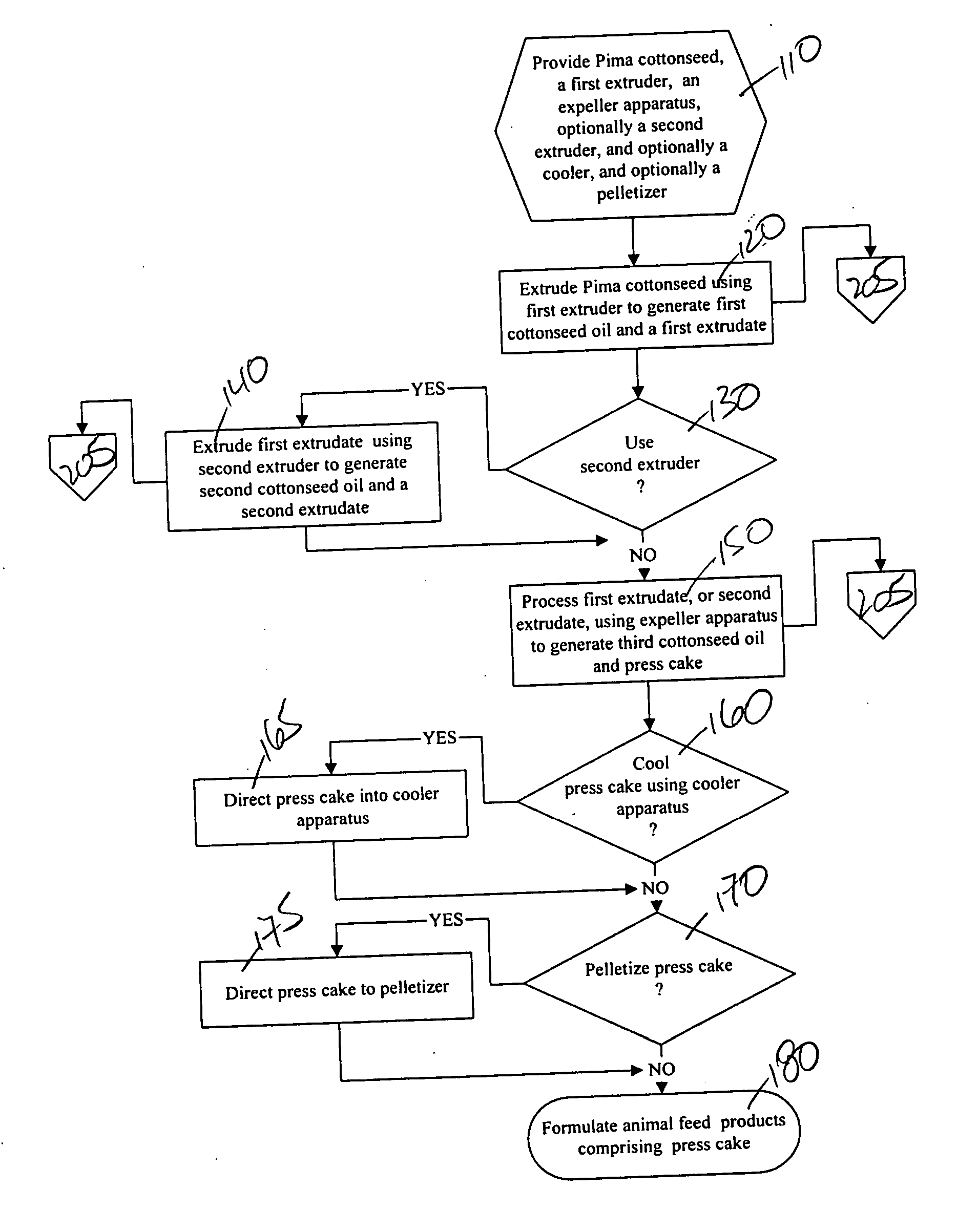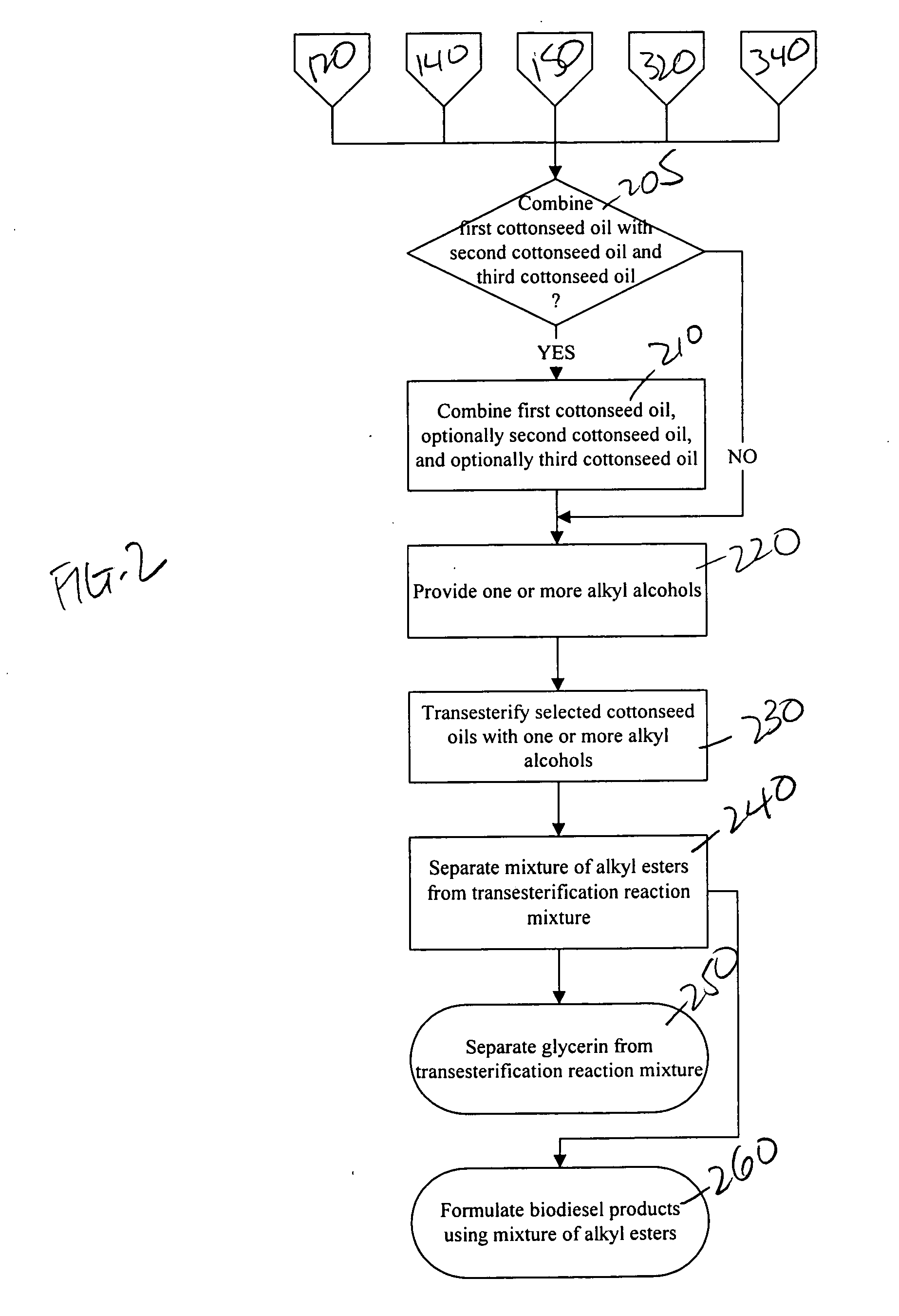Method to form an animal feed and biodiesel feedstock from Pima cottonseed
a technology of biodiesel feedstock and cottonseed, which is applied in the field of pima cottonseed animal feed and biodiesel feedstock, can solve the problems of heart failure, poultry and swine cannot handle much gossypol before toxicity signs develop, and the use of cottonseed as an animal feed is limited
- Summary
- Abstract
- Description
- Claims
- Application Information
AI Technical Summary
Problems solved by technology
Method used
Image
Examples
example i
[0074] About 11,000 pounds of Pima cottonseed were processed at Texas A&M University using the method of FIG. 1 described hereinabove. The resulting processed Pima cottonseed of this Example I comprised a free gossypol level of 730 ppm or less. Free Gossypol is typically present in unprocessed Pima cottonseed in levels as high as 12000 ppm, or 1.2% free gossypol by weight. In addition to these reduced free gossypol levels, processed Pima cottonseed of this Example I comprised enhanced rumen undigestible protein (“RUP”). RUP comprises protein-derived materials that pass through the rumen without digestion. For this reason, such RUP materials are sometimes referred to as “bypass” protein.
[0075] TABLE IA shows weight percentages for crude protein, ruminally degradable protein (“RDP”), and rumen undigestible protein (“RUP”) for three samples, wherein those samples comprise a University of Minnesota SBM Standard comprising soy bean meal, unprocessed Pima cottonseed, and processed Pima c...
PUM
 Login to View More
Login to View More Abstract
Description
Claims
Application Information
 Login to View More
Login to View More - R&D
- Intellectual Property
- Life Sciences
- Materials
- Tech Scout
- Unparalleled Data Quality
- Higher Quality Content
- 60% Fewer Hallucinations
Browse by: Latest US Patents, China's latest patents, Technical Efficacy Thesaurus, Application Domain, Technology Topic, Popular Technical Reports.
© 2025 PatSnap. All rights reserved.Legal|Privacy policy|Modern Slavery Act Transparency Statement|Sitemap|About US| Contact US: help@patsnap.com



